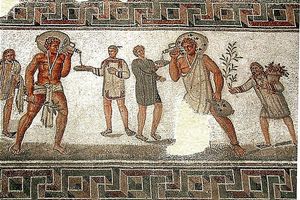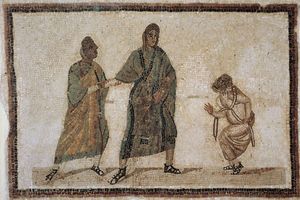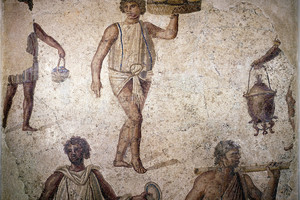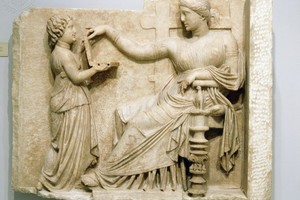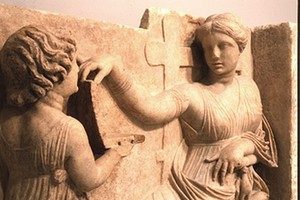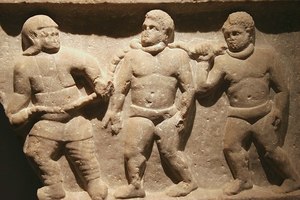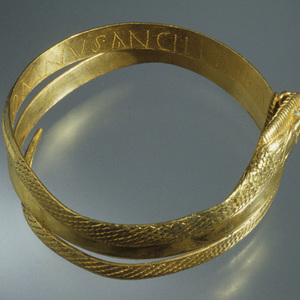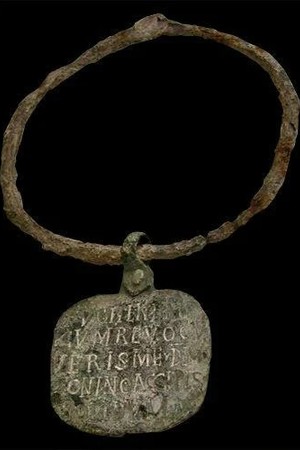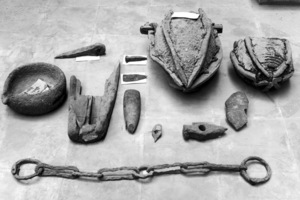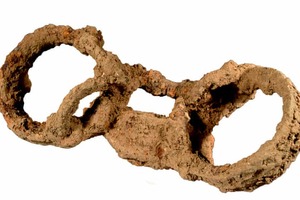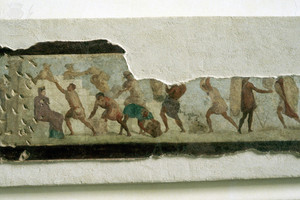Slaves
A slave (Latin servus) was a member of the lowest social class in antiquity, possessing virtually no rights.
The institution of slavery was widespread in ancient times, reaching its peak development in Ancient Greece and Rome, facilitated by cultural norms and the effectiveness of this model for state development. For the Romans, as earlier for the Greeks, slaves were often associated with foreigners. Other peoples were considered barbarians, inferior beings created for slavery. This view was notably held by Marcus Tullius Cicero, as mentioned in his treatises.
Slavery in Rome
The main cause of enslavement was capture in war: captured citizens of other states made up the overwhelming majority of slaves. This is evidenced by many written sources, including tomb inscriptions. Roman slaves in the late 2nd century BC were mostly natives of Asia Minor, Syria, and Greece, regions recently conquered by Rome. Extensive conquests during this period led to a peak in the development of slavery in Ancient Rome. Another source of slavery was maritime piracy, which reached its peak in the mid-1st century AD. There was also a custom allowing creditors to enslave their debtors, legalized by the Laws of the Twelve Tables in the 5th century BC. However, in the 4th century BC, the Lex Petelia was passed, which prohibited the enslavement of Roman citizens, allowing only foreigners to become slaves. Exceptions to this rule occurred when the state subjected a citizen to maxima capitis diminutio, transforming them into a slave for crimes committed. Another exception was if a free woman engaged in a relationship with a slave and did not terminate it despite her master's thrice-repeated order; she also became a slave of the same master.
The sources of slavery also included the natural increase of the enslaved population through the birth of children to female slaves. Over time, an entire industry developed around the trade of slaves. Slaves were imported to Rome from Africa, Spain, Gaul, and other regions. Most often, slaves were brought from Bithynia, Galatia, Cappadocia, and Syria. The slave trade brought enormous income to the treasury, as the import, export, and sale of slaves were taxed. The import of a eunuch was taxed at 1/8 of his value, other slaves at 1/4, and an additional sales tax of 2-4% was imposed. The slave trade was one of the most profitable businesses, with Greeks dominating the trade due to their extensive experience.
Social Status of Slaves
Despite the fact that slaves held the lowest social status in Rome, the quality of their lives, clothing, and occupations could vary greatly. A slave's status was influenced by their owner. Being owned by a wealthy and kind master was a great fortune: such a slave could dress and eat well, and even receive an education. The lifestyle of such slaves could be better than that of some free-born Romans, and particularly serviceable slaves sometimes received expensive gifts from their masters. Female slaves were often used for sexual purposes. In Pompeii, near Mogherini, a golden bracelet was found with the inscription "dominus ancillae suae"—"from the master to his slave," indicating a costly gift to a concubine.
Romans treated slaves as property, but this did not necessarily mean that slaves were always treated poorly. Like any other property, slaves were preserved to maintain their value. Slaves could be raised and educated as an "investment," so they could be sold at a profit later. Slaves were often made to wear special tags indicating their enslaved status, with their owner's name inscribed, asking for the slave's return in case of escape, with a reward offered.
Most slaves were used for fieldwork, construction, as laborers, miners, and for other physically demanding tasks. In such cases, they were often kept in chains to prevent escape. Slaves were forbidden to serve in the army, but they had a "combat" occupation—gladiatorial combat, which is discussed in a corresponding section.
Reconstruction
The image of a slave is one of the simplest and cheapest to reconstruct from antiquity. However, slaves could sometimes look quite well-groomed, especially if they were owned by wealthy masters.
List of Possible Slave Outfit Elements:
- Shackles
- Slave Tag-Collar
- Jewelry
Related topics
Tunic, Balteus, Sandals, Subligaculum, Armilla, Saccus, Purse
Literature
- Vasilevsky M. G., Lipovsky A. L., Turaev B. A. Rabstvo // Encyclopedia of Brockhaus and Efron : in 86 volumes (82 volumes and 4 additions). - St. Petersburg, 1890-1907.
- Elnitsky L. A. The emergence and development of slavery in Rome in the VIII-III centuries BC Moscow, 1964.
- Slavery in the eastern provinces of the Roman Empire in the first and third centuries. Moscow, 1977.
- Benjamin Constant (1767-1830) Lecture-speech (in French — discours): About freedom among the ancients in its comparison with freedom among modern people-a lecture on the concept of freedom in the Ancient world and its differences from the modern one, about this phenomenon.

 Gallery
Gallery






